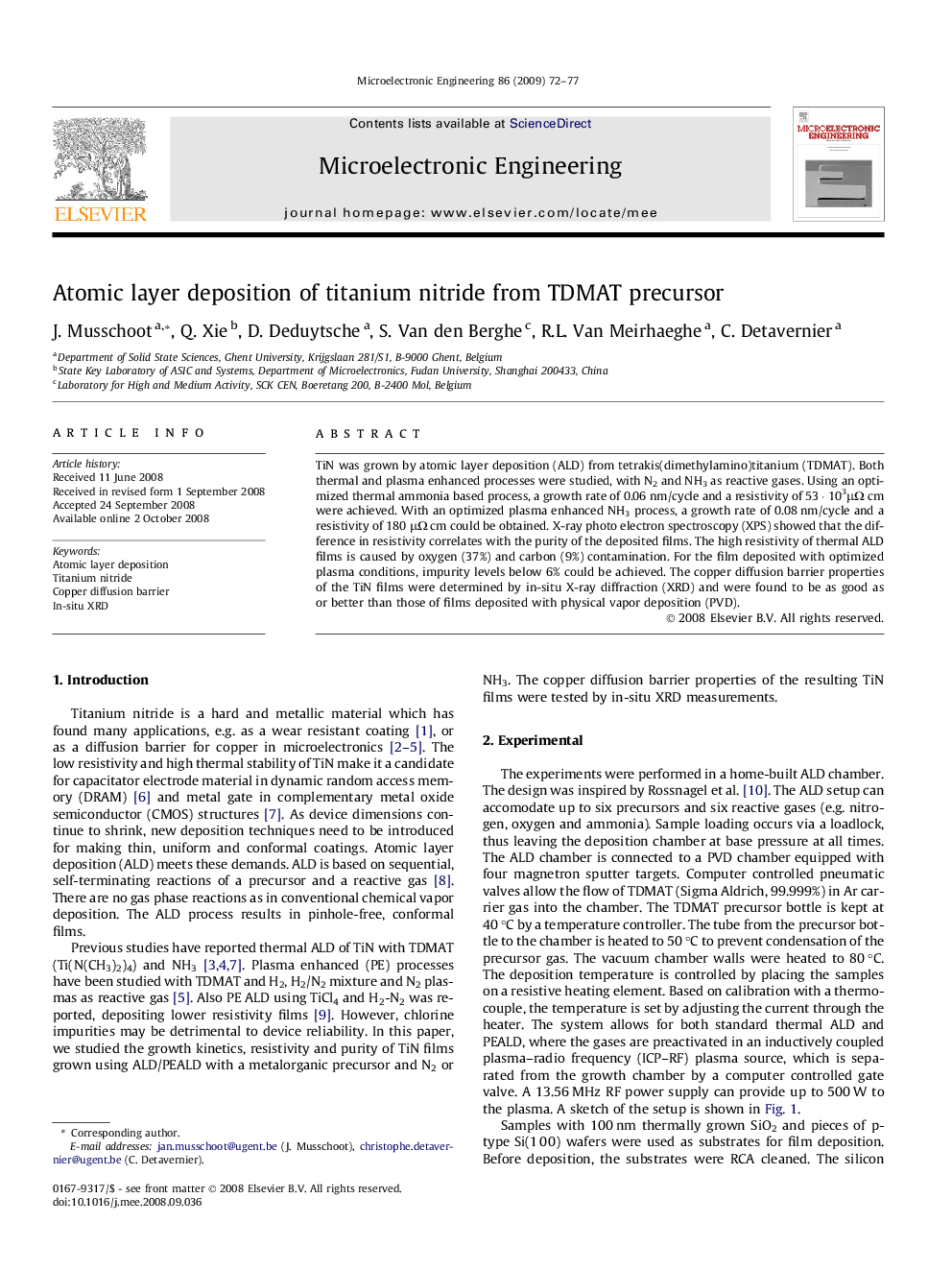| Article ID | Journal | Published Year | Pages | File Type |
|---|---|---|---|---|
| 541633 | Microelectronic Engineering | 2009 | 6 Pages |
TiN was grown by atomic layer deposition (ALD) from tetrakis(dimethylamino)titanium (TDMAT). Both thermal and plasma enhanced processes were studied, with N2 and NH3 as reactive gases. Using an optimized thermal ammonia based process, a growth rate of 0.06 nm/cycle and a resistivity of 53 × 103 μΩ cm were achieved. With an optimized plasma enhanced NH3 process, a growth rate of 0.08 nm/cycle and a resistivity of 180 μΩ cm could be obtained. X-ray photo electron spectroscopy (XPS) showed that the difference in resistivity correlates with the purity of the deposited films. The high resistivity of thermal ALD films is caused by oxygen (37%) and carbon (9%) contamination. For the film deposited with optimized plasma conditions, impurity levels below 6% could be achieved. The copper diffusion barrier properties of the TiN films were determined by in-situ X-ray diffraction (XRD) and were found to be as good as or better than those of films deposited with physical vapor deposition (PVD).
